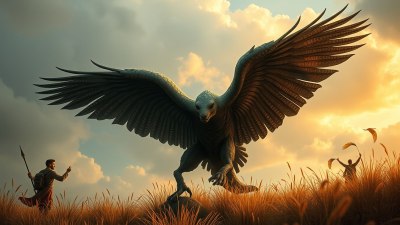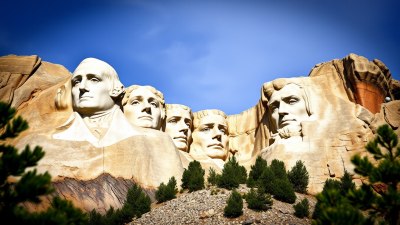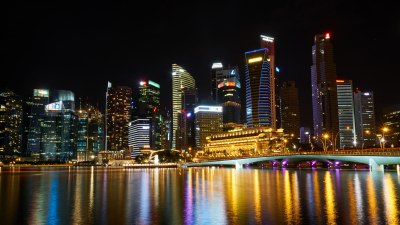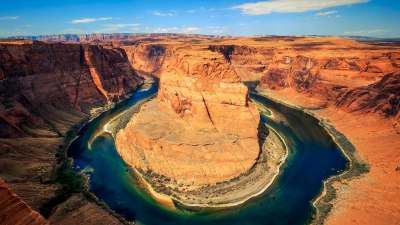Lost Legends Hidden in Plain Sight
Explore forgotten tales and legendary figures that remain unnoticed in modern culture.

Image created with Flux Schnell
In a world bustling with information and rapid advancements, many remarkable stories and historical figures often fade into obscurity. These lost legends, hidden in plain sight, continue to hold profound meanings and lessons for us today. As we delve into the depths of forgotten folklore, neglected historical narratives, and undiscovered individuals, we unearth gems of wisdom and inspiration that have shaped our world despite being overlooked. From ancient mythologies to unsung heroes of the modern era, these tales warrant a new platform for recognition.
Unfamiliar Folklore
Folklore serves as a cultural tapestry that weaves together the beliefs and traditions of a community. Many societies possess rich folklore, yet numerous tales have not been told beyond their origins. The stories of regional deities, mythical creatures, or local heroes can provide insights into the values and moral codes of those communities. For example, the indigenous tales of the Americas include various creation myths describing the relationship between humans and nature. These stories not only entertain but also impart vital lessons on stewardship and respect for the environment.
A notable example is the story of Coyote, a trickster figure in Native American lore. Coyote’s narratives often highlight themes of cleverness and adaptability, showcasing that survival can be founded on wits rather than sheer strength. Understanding such folk narratives can promote cultural appreciation and awareness, allowing us to learn from diverse perspectives. Yet, these tales remain concealed in local traditions, often unnoticed by the greater world.
Historical Figures Lost to Time
Throughout history, countless individuals have made significant contributions to society, only to be overshadowed by more famous figures. These historical stalwarts, often overlooked, represent the diversity of human achievement and resilience. For instance, many women in history were pivotal to social movements and innovations yet remain unrecognized. Figures like Ada Lovelace, the first computer programmer, and Katherine Johnson, a brilliant mathematician who played an important role in NASA’s early space missions, have only recently begun to receive their due acknowledgment.
In addition, lesser-known leaders like Wangari Maathai, an environmental and political activist from Kenya, revolutionized the concept of eco-feminism through initiatives like the Green Belt Movement. This organization not only focused on environmental conservation but also empowered women and encouraged any grassroots activism in Kenya. Rediscovering the achievements of such individuals helps us appreciate the interconnectedness of history and celebrate the accomplishments of those who came before us.
Lost Civilizations: Echoes of the Past
When we think of ancient civilizations, names like Egypt, Rome, and Greece typically come to mind. However, various remarkable cultures have existed that are largely forgotten today. The Harappan Civilization, for instance, was one of the world's earliest urban cultures, exhibiting advanced architecture and organizational skills. Its decline and ultimate disappearance remain topics of fascination and speculation among historians. Studying these lost civilizations grants us an opportunity to reflect on the cyclical nature of societies and the factors leading to their rise and fall.
Likewise, the Muisca Confederation, a complex society in present-day Colombia, crafted intricate goldwork and held unique religious beliefs centered around nature and the cosmos. Their legends of El Dorado, the city of gold, not only showcase the West's obsession with wealth but also illustrate the profound connection of indigenous people to their land and resources. The stories and knowledge of these lost civilizations illuminate the rich tapestry of human history and encourage us to learn from their successes and failures.
The Importance of Remembering
When we actively choose to remember and celebrate these lost legends, we perform an essential cultural preservation act. Recognizing these figures and stories enriches our understanding of the human experience and allows us to honor voices that have been marginalized or forgotten. By sharing and disseminating these narratives, we foster a sense of community and understanding across diverse cultures and generational lines.
Cultural institutions, educators, and storytellers play a vital role in keeping these legends alive. Museums often host exhibits that highlight lesser-known historical figures and forgotten stories. Schools and community programs can integrate these narratives into their curricula, creating a rich educational environment that sparks students' curiosity about the past.
Modern Legends in the Shadows
In contemporary society, the rapid flow of information can lead to many modern legends being overshadowed. Unsung heroes operate in various fields, from medical professionals on the front lines to community leaders fighting for social justice. Their stories, often eclipsed by celebrity culture, deserve recognition and appreciation for the contributions they make daily.
The COVID-19 pandemic illustrated numerous instances where ordinary people became legends through their acts of compassion and bravery. From healthcare workers risking their lives to save others to scientists developing life-saving vaccines, these individuals have become the unsung heroes of our time. Telling their stories inspires hope and resilience, serving as a reminder of the power of humanity in the face of adversity.
How to Unearth Lost Legends
Finding lost legends requires a collective effort. First, individuals and communities should delve into their local history, exploring libraries and archives for stories and records that may have been neglected. Engaging in discussions with historians and local elders can yield invaluable insights into regional lore and forgotten anecdotes.
Furthermore, digital platforms enable broader access to these lost narratives. Social media campaigns and blogs dedicated to historical education can amplify lesser-known stories, generating interest in forgotten legends. Documentaries and podcasts focusing on unsung figures and myths can capture a broader audience while educating them about history beyond commonly held narratives.
Preserving the Lost
Ultimately, the act of preserving these lost legends is crucial for nurturing future generations. By fostering a spirit of curiosity and respect for history, we can create a more inclusive narrative that honors the contributions of all individuals. Curriculum development should embrace global histories, ensuring that students learn about diverse cultures and the stories that shaped their world.
Project initiatives aimed at documenting personal stories of community members can ensure that oral histories are not lost to time. Through workshops and storytelling sessions, younger generations can connect with their heritage, becoming custodians of their local legends and narratives.
Towards a More Inclusive Future
As we journey through life, it’s imperative to look around us and recognize the layers of history and culture that form the foundation of our existence. The lost legends hidden in plain sight offer us lessons, inspiration, and a call to action to seek understanding and acknowledgment of those who came before us. These stories and individuals remind us that we are part of a larger continuum, connecting us through shared experiences and diverse perspectives.
In conclusion, by unearthing and celebrating lost legends, we contribute to a richer understanding of human history and pave the way for an inclusive cultural future. Every story matters; every voice deserves to be heard. In recognizing the contributions of forgotten figures and legends, we embrace the fullest narrative of human experience, ensuring that we honor the past while inspiring future generations.











